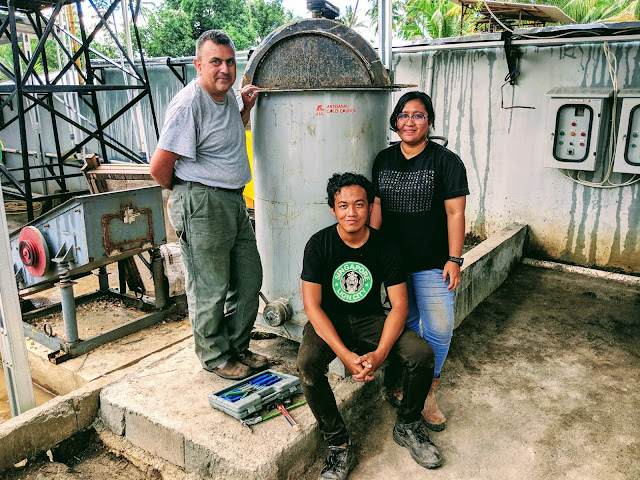World Artisanal Gold Production
How much artisanal gold is produced per year is an interesting and important question. It defines the size of the artisanal and small scale gold mining (ASGM) economy. This is an informal economy that mainly serves the important role of supporting rural development in developing countries - just as it did in western North-America 100 years ago. Typically around 70% of the value of the gold remains with the miners and in-country. However, due to the informal nature of artisanal and small scale gold mining, a good estimate of annual gold production is not possible. The most recent robust estimate may be the one included in Telmer and Veiga (2009) World emissions of mercury from Artisanal and small scale gold mining. In N. Pirrone and R. Mason (eds.), Mercury Fate and Transport in the Global Atmosphere, Springer Science. This is available at Springer Link. The estimate is 330 tonnes of gold per year or 12% of official world production. The estimate considers a variety of types of data from 70 countries. Other higher numbers such as the 20-30% noted in The Global Atmospheric Mercury Assessment: Sources, Emissions and Transport by UNEP in 2008 rely on less data and less types of data. These higher numbers are also more difficult to align with other factors such as financial constraints and the magnitude of mercury consumption needed to produce the gold - a very large percentage of ASGM gold is produced using mercury.
Considering financial constraints, 330 tonnes of gold (12%) is worth roughly $15 billion USD in 2011 at a gold price of $1500/oz. If there are 10 million miners (also not a very well known number but seemingly reasonable and compliant with new numbers coming from some of the major ASGM countries), then each miner makes $1500/year or about $6/day - this also complies with average incomes reported from many field studies. On the other hand, 30% of global production (global production is around 2500 tonnes) would be almost 750 tonnes of gold. That is a primary economy of around 36 billion dollars in 2011 and equates to $3600/year or $14 per day per miner for 10 million miners. Of course the money is not evenly distributed but this level of income doesn't comply with many numbers that have been presented where miners are making $2 to $5/day on average.
An additional and important consideration when thinking about total ASGM gold production is the amount of mercury required to produce it. If on average ASGM miners use 3 units of mercury for every unit of gold produced - a ratio that incorporates a mix of practices including mercury intensive practices like whole-ore-amalgamation - then the production of 330 tonnes of gold requires 1000 tonnes of mercury. If ASGM gold production were 750 tonnes/year then about 2250 tonnes of mercury would be required - an amount close to total global trade in mercury and therefore unreasonable.
Because solid data is sparse in informal economies, and activities like ASGM are relatively elastic and so can grow and shrink more rapidly than the formal gold mining sector, there will be less confidence in estimates of their magnitude. Assumptions and triangulation using various types of data and a firm application of Occam's razor are necessary. Accordingly, currently there do not appear to be data that can support an ASGM economy as large as 750 tonnes of gold per year. However, the price of gold and the incentive for poor people to mine it has certainly grown since 2009. Perhaps due to this, the ASGM economy has grown since then and is now approaching 15% of global gold production? This would be good news for those communities that are capturing the potential development opportunity. Even better news if ASGM practices can be improved to lessen health and environmental impacts - perhaps through assistance from the gold industry or countries heavily involved in it. How much gold comes from this informal source? Worth thinking about... And also worth further solidifying.
An additional and important consideration when thinking about total ASGM gold production is the amount of mercury required to produce it. If on average ASGM miners use 3 units of mercury for every unit of gold produced - a ratio that incorporates a mix of practices including mercury intensive practices like whole-ore-amalgamation - then the production of 330 tonnes of gold requires 1000 tonnes of mercury. If ASGM gold production were 750 tonnes/year then about 2250 tonnes of mercury would be required - an amount close to total global trade in mercury and therefore unreasonable.
Because solid data is sparse in informal economies, and activities like ASGM are relatively elastic and so can grow and shrink more rapidly than the formal gold mining sector, there will be less confidence in estimates of their magnitude. Assumptions and triangulation using various types of data and a firm application of Occam's razor are necessary. Accordingly, currently there do not appear to be data that can support an ASGM economy as large as 750 tonnes of gold per year. However, the price of gold and the incentive for poor people to mine it has certainly grown since 2009. Perhaps due to this, the ASGM economy has grown since then and is now approaching 15% of global gold production? This would be good news for those communities that are capturing the potential development opportunity. Even better news if ASGM practices can be improved to lessen health and environmental impacts - perhaps through assistance from the gold industry or countries heavily involved in it. How much gold comes from this informal source? Worth thinking about... And also worth further solidifying.



This information has many things to read and I am glad to read more impressive information about it. Thank you so much for the share yourbuygoldguide.com
ReplyDelete